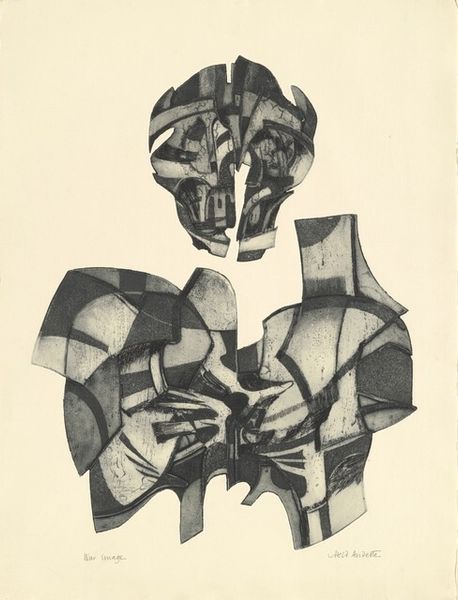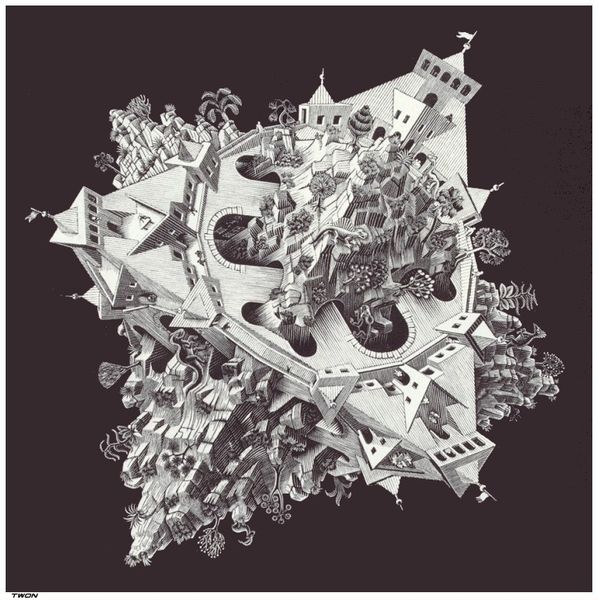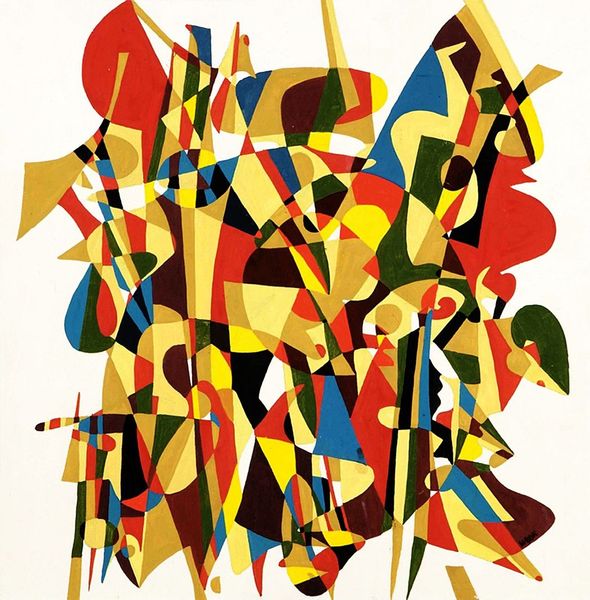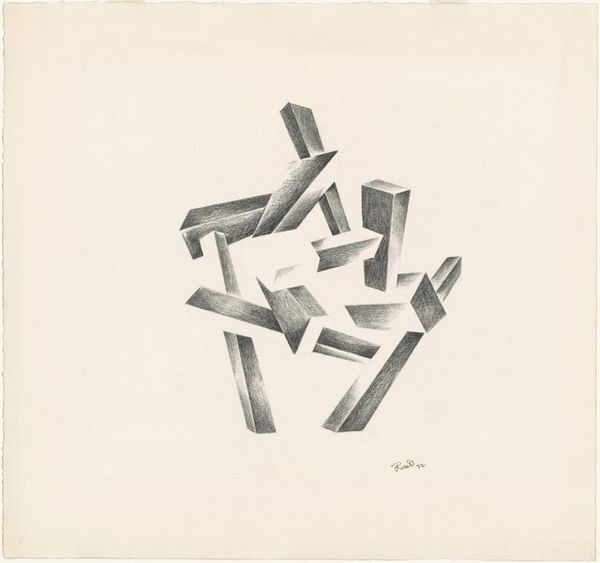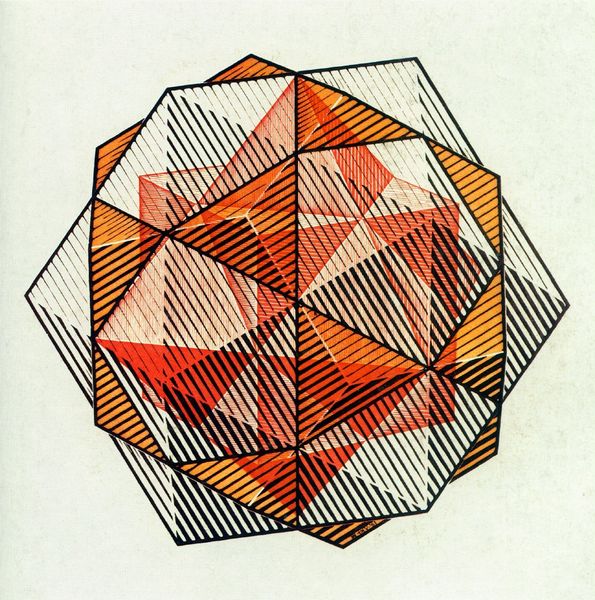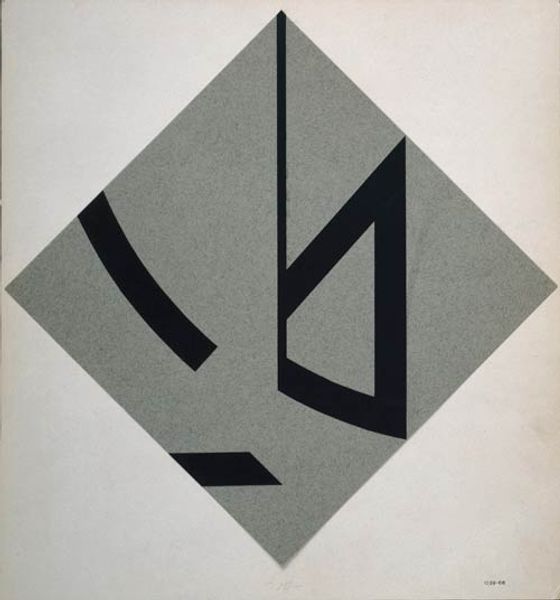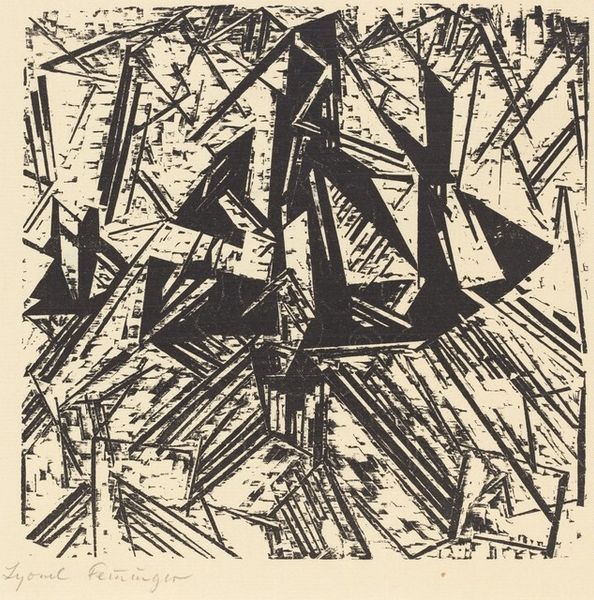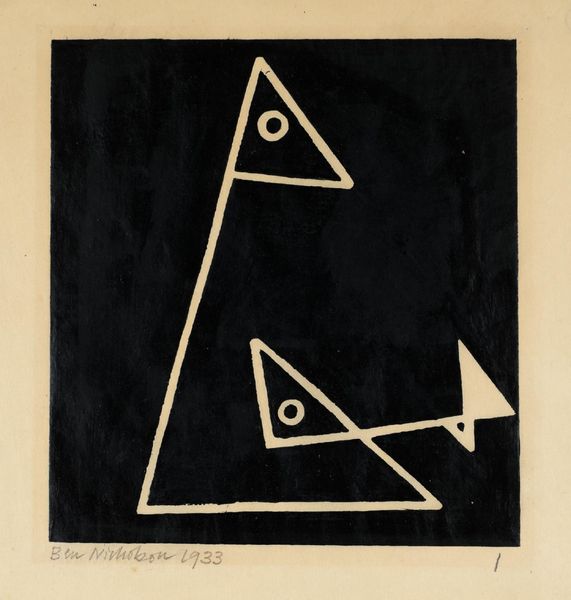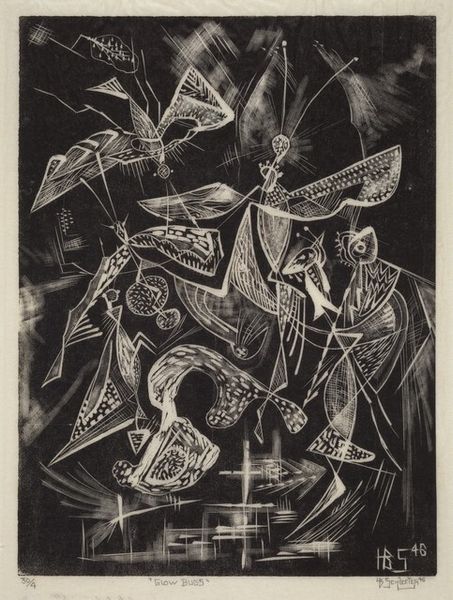
Dimensions: sheet: 39.69 × 40.01 cm (15 5/8 × 15 3/4 in.)
Copyright: National Gallery of Art: CC0 1.0
Editor: Here we have M.C. Escher’s "Gravity," a lithograph printed in 1952. The more you look at it, the more confusing it gets. It's both geometric and organic. How do you interpret this work? Curator: It’s a powerful image, isn’t it? The star, or polyhedron to be exact, can be seen as a container. But it also represents something reaching outward. Notice the creatures inside are also both contained and straining. This creates an interesting dialogue between the individual and their place within the universe, suggesting perhaps a striving for transcendence within defined boundaries. Do you think this struggle reflects cultural memory or individual expression? Editor: It feels like both, honestly. It's such a mind-bending representation! Curator: Yes! The tension here suggests the image becomes an echo of the tension between societal expectations and the individual's internal drive, doesn't it? Consider how geometric forms were historically employed. The Platonic solids were aligned with metaphysical concepts and divine forms. By placing biological forms inside geometric, "perfect" structures, Escher’s use of figuration poses complex questions about humanity's place in that divine order. The lithograph technique allows for those detailed shadows too, enriching this theme. Editor: That's really insightful, especially the way you connect it to the Platonic solids and divine order! I hadn’t considered how that influenced the reading. Curator: And note how this visual tension makes a space where multiple interpretations become valid. I learned something myself looking at it from your fresh point of view. Editor: It's fascinating to think about art as a meeting place, too. I appreciate your thoughts.
Comments
No comments
Be the first to comment and join the conversation on the ultimate creative platform.


